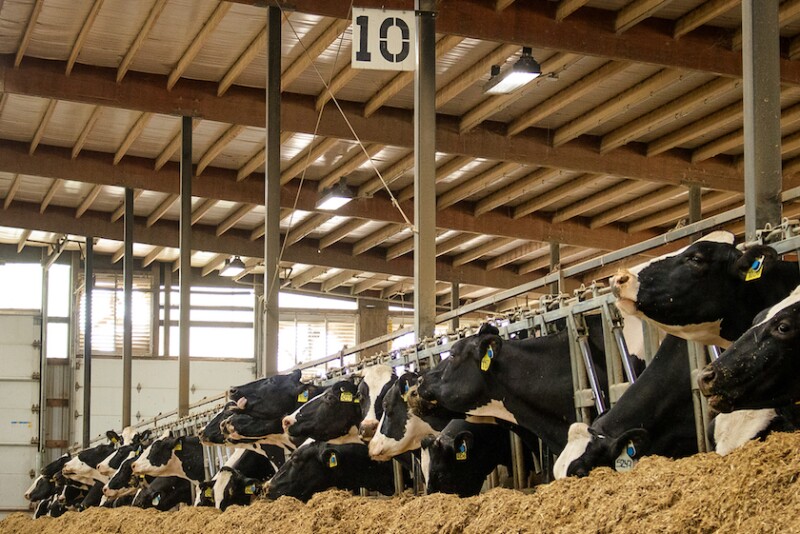With feed prices dropping, no indemnity payment will be issued for March milk production, as the USDA Agricultural Prices report calculated Dairy Margin Coverage (DMC) income over feed costs to be $9.65. The takeaway from the report included:
- The all-milk price increased by a dime from last month to $20.70/cwt.
- Feed costs fell by $0.11/cwt to $11.05. Corn remained unchanged.
- Corn price remained unchanged from February at $4.36/bu.
- Premium alfalfa dropped $7 per ton to $271.
- Soybean meal dropped $1.46 per ton to $362.17.
“The all-milk price is only $0.40/cwt. lower than last March, but feed costs are down nearly $4.00/cwt.,” Erick Metzger, general manager with National All-Jersey, stated. “Hay is down $43 per ton; corn is lowered by $2.31 per bushel and soybean meal is $122.23 per ton less.”
In 2023, producers maximizing Dairy Margin Coverage utilization could have received up to nearly $150,000.
Phil Plourd, president of Ever.Ag Insights, says that in a vacuum, the absence of a DMC payment seems like a good thing.
“It means that ‘the market’ is yielding better results,” he says. “In real life, however, things haven’t likely gotten that much better on the farm as lower feed prices don’t benefit everyone and a wide Class III and Class IV spread has been creating uneven income performance. If the current cheese rally sticks, the income side will improve more universally.”
Metzger says that continued increasing butterfat tests seem evident in the all-milk price. Nationally, last month’s butterfat test averaged 4.28% compared to year-ago levels that averaged 4.19%. In 2021, for the first time, the average milk fat in the Upper Midwest hit 4.0%.
Isaac Salfer, assistant professor of dairy nutrition at the University of Minnesota, shared that the trend continues.
“I fully expect that in a few years, I will be teaching my class that a 4.0% milk fat test is on the low end of what a herd should expect,” he says.
Salfer says there are four main reasons why milk fat continues to increase:
- Improved ration formulation with an emphasis on feeding rumen-protected fatty acid products and focusing on fatty acid digestibility.
- Improved forage quality and fiber digestibility, which allows you to feed higher fiber diets without sacrificing available energy for milk production.
- Improved feed and bunk management to maximize cows’ time at the feed bunk.
- Improved genetic selection for milk fat percentage, mainly due to the use of the Net Merit $ selection index, which puts heavy emphasis on milk fat and protein yield.
Capitalizing on butterfat is one-way producers are trying to boost not only their milk check, but also their bottom-line, as DMC indemnity payments did not generate any dollars for March.













